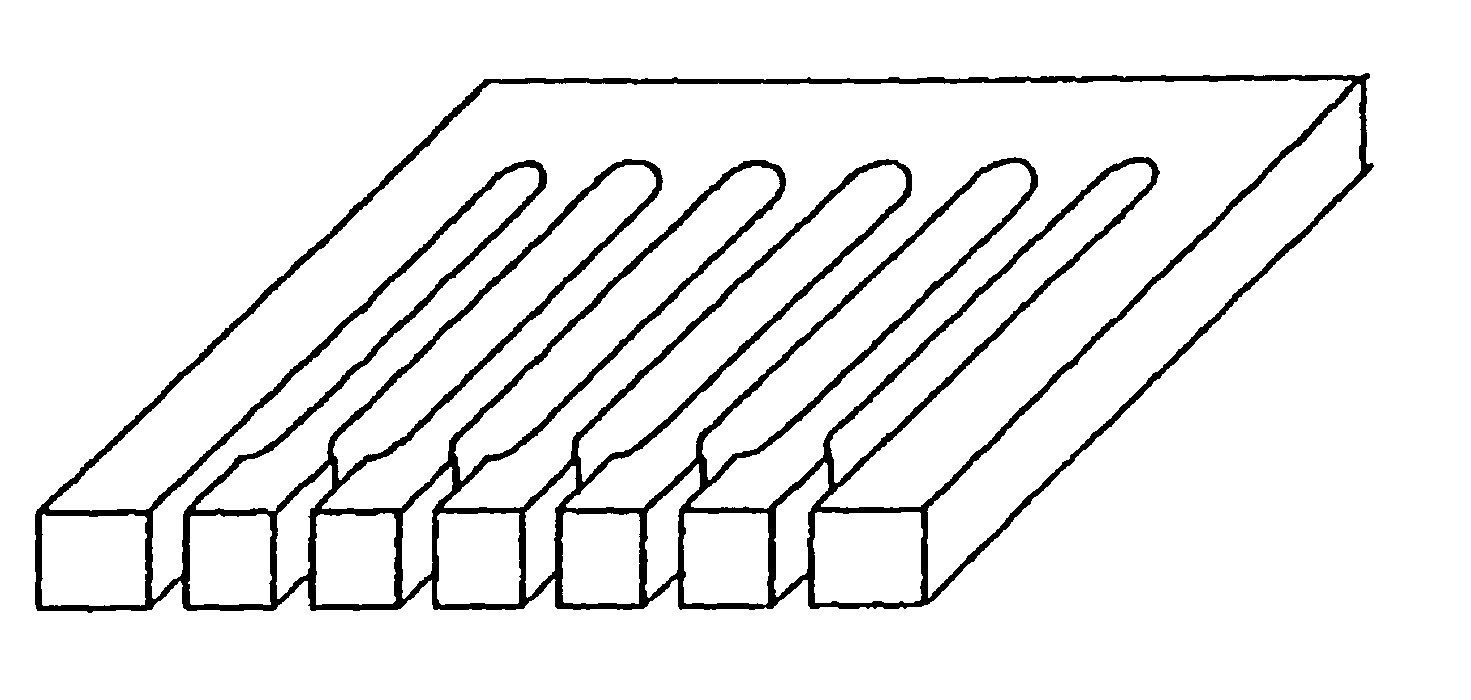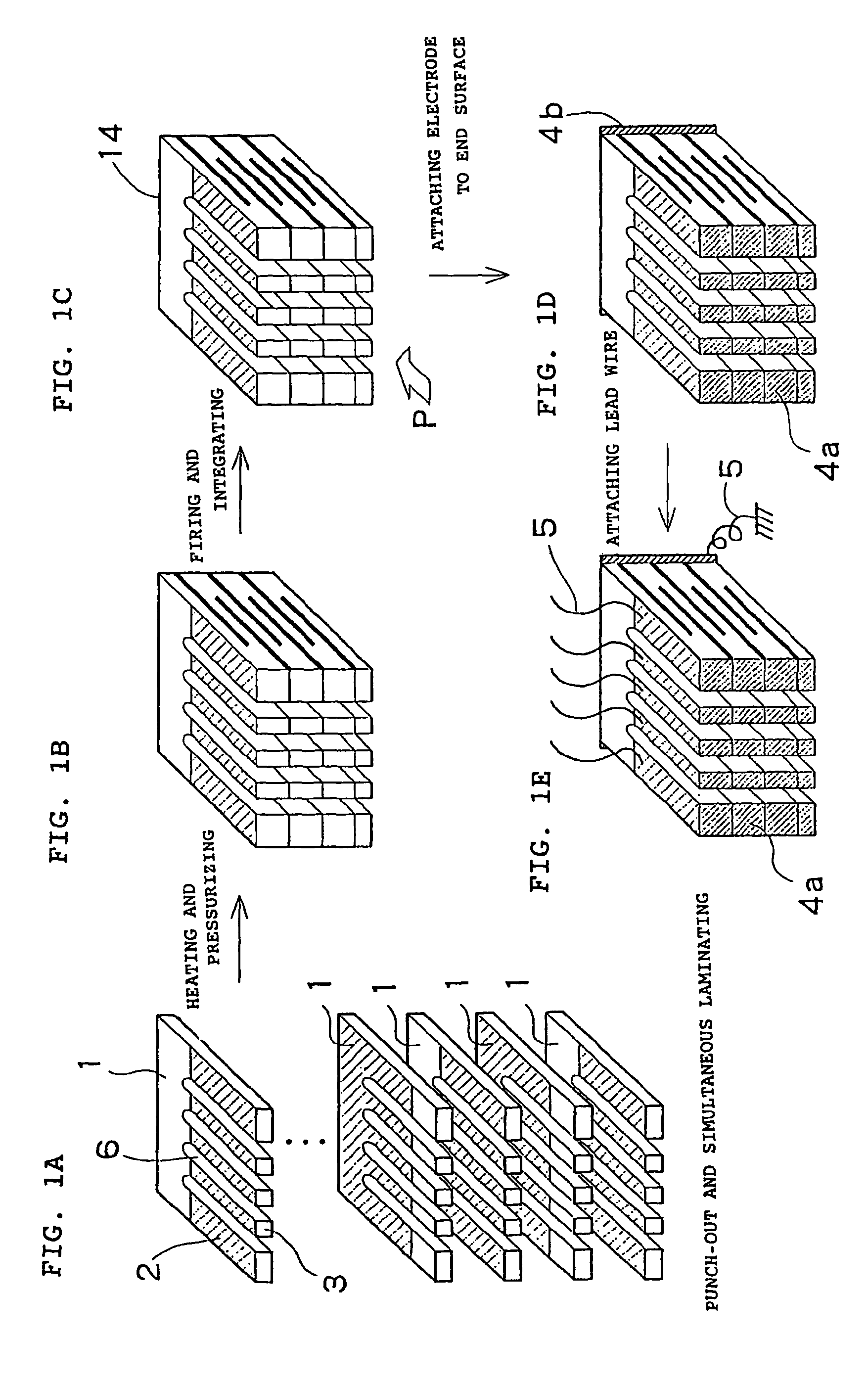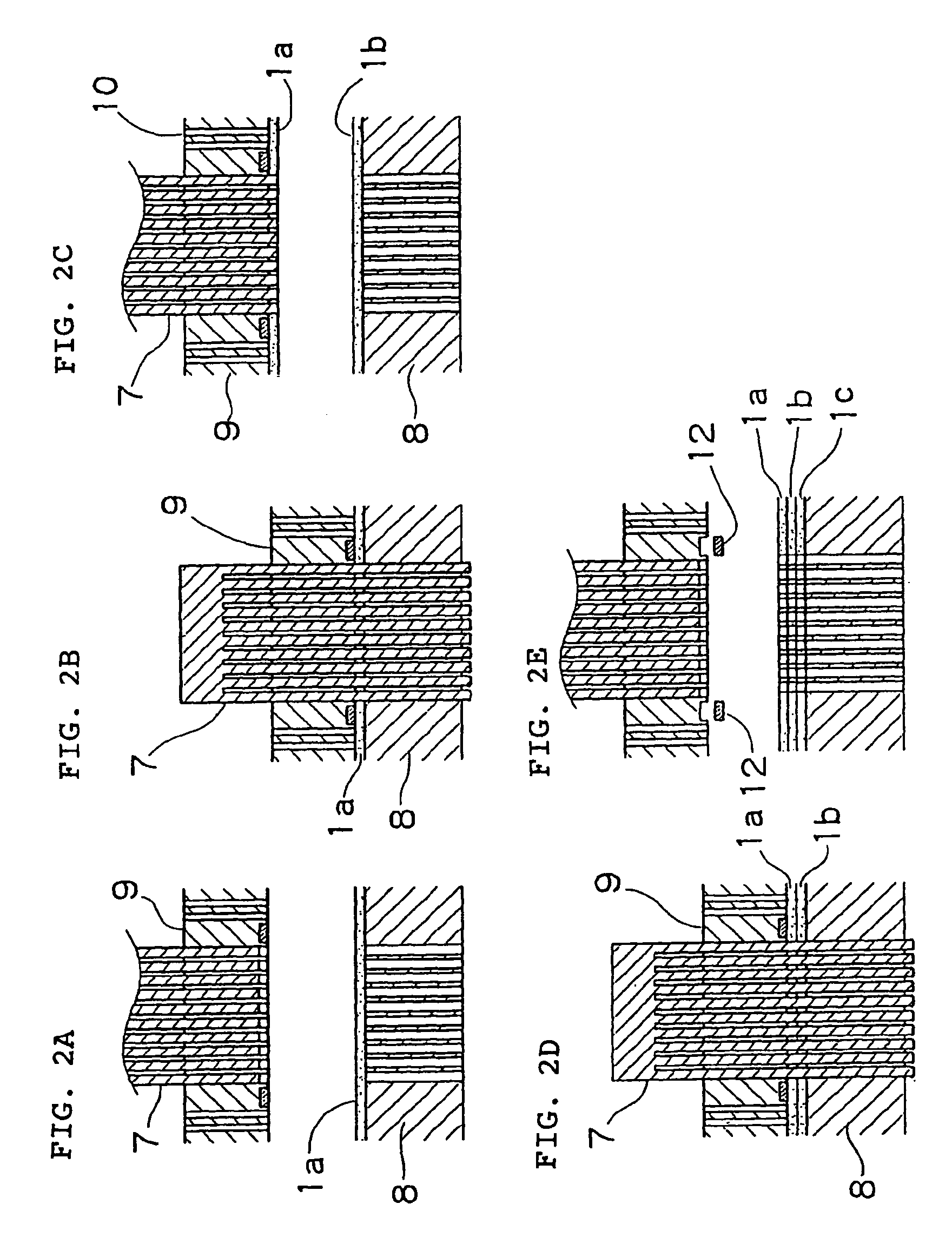Method for manufacturing a comb teeth type piezoelectric actuator
a piezoelectric actuator and comb teeth technology, applied in piezoelectric/electrostrictive transducers, generators/motors, variable capacitors, etc., can solve the problems of large misalignment, poor precision, and large misalignment between piezoelectric layers of comb teeth, and achieve excellent durability and reliability.
- Summary
- Abstract
- Description
- Claims
- Application Information
AI Technical Summary
Benefits of technology
Problems solved by technology
Method used
Image
Examples
Embodiment Construction
[0030] The invention will be described in detail with reference to the drawings. FIGS. 1A-D show one example of a comb teeth type piezoelectric actuator according to the invention, and an outline of a manufacturing process therefore. FIG. 1E shows a finished comb teeth type piezoelectric actuator. A manufacturing procedure is that, after forming an electrode film 2 on a piezoelectric material green sheet 1 (hereinafter, simply referred to as a sheet), slits 6 of each sheet 1 are formed as illustrated in FIG. 1A, i.e., the steps of forming comb teeth 3 and laminating the green sheets are carried out at the same moment by a method described later in which the comb teeth 3 are formed by laminating sheets, and by the time of completion of punching-out, the laminating of the layers is completed.
[0031] Then, respective layers are placed in contact, heated and pressurized as shown in FIG. 1B, and fired as shown in FIG. 1C to obtain and a driving part 14 of a multi-layer piezo-actuator. Th...
PUM
| Property | Measurement | Unit |
|---|---|---|
| width | aaaaa | aaaaa |
| thickness | aaaaa | aaaaa |
| width | aaaaa | aaaaa |
Abstract
Description
Claims
Application Information
 Login to View More
Login to View More - R&D
- Intellectual Property
- Life Sciences
- Materials
- Tech Scout
- Unparalleled Data Quality
- Higher Quality Content
- 60% Fewer Hallucinations
Browse by: Latest US Patents, China's latest patents, Technical Efficacy Thesaurus, Application Domain, Technology Topic, Popular Technical Reports.
© 2025 PatSnap. All rights reserved.Legal|Privacy policy|Modern Slavery Act Transparency Statement|Sitemap|About US| Contact US: help@patsnap.com



